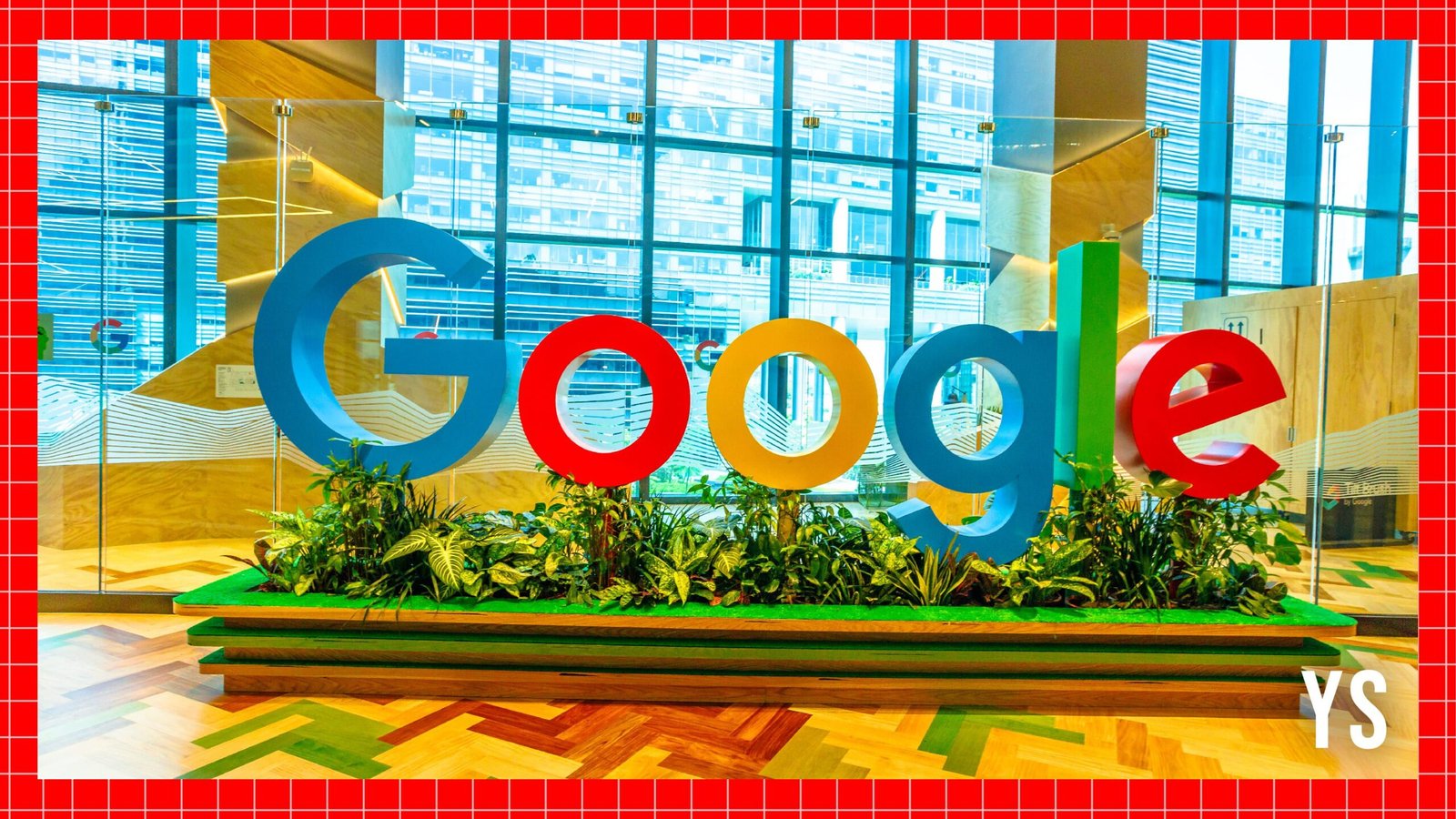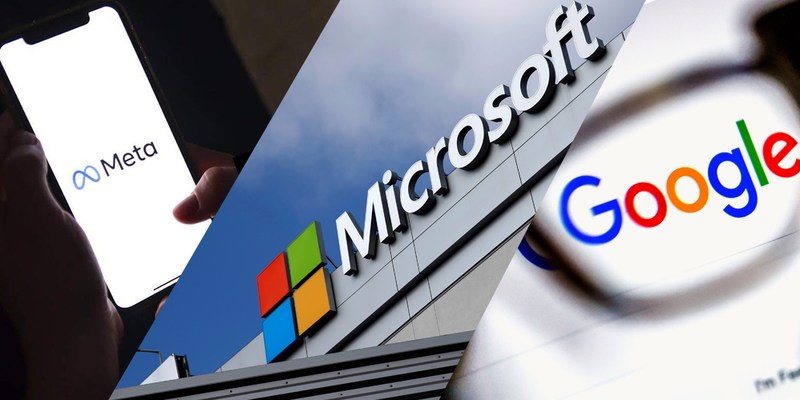Startup
Inside the green jobs market; ElasticRun’s growth plan for FY25

Hello,
Swiggy is said to be revising its IPO valuation.
It has supposedly slashed it to $11.3 billion, 25% below the initial goal of $15 billion, as market volatility and the lacklustre debut of Hyundai India weighed on sentiment.
According to Reuters, BlackRock and Canada Pension Plan Investment Board (CPPIB) will invest in the $1.4 billion IPO—the country’s second-biggest stock offering this year.
Just before Diwali, the Indian bourses entered the bear market amid weak global cues and rising volatility. The NSE Nifty 50 fell 2.7% last week and the BSE Sensex dropped 2.2%, logging losses for the fourth straight week.
In fact, October turned out to be the worst-ever month in terms of foreign fund outflows, with foreign investors pulling out a massive Rs 85,790 crore (around $10.2 billion) from equities due to the elevated pricing of domestic equities.
Investors would be treading tricky waters next few weeks, for sure.
ICYMI: The startup founders who took on Google!
Mother Nature is mysteriously beautiful! For instance, who knew the Dahlia flowers could help fight cancer?
Researchers at Oregon Health and Science University and the University of Portland have discovered a game-changing compound in these vibrant flowers that could help treat a host of illnesses—MS, cancer, Alzheimer’s disease, certain brain injuries and even cerebral palsy!
Always pleasant to the eyes, now Dahlias may well be soothing for the nerves!
In today’s newsletter, we will talk about
- Inside the green jobs market
- ElasticRun’s growth plan for FY25
Here’s your trivia for today: Which is the world’s longest cave system?
In-depth
Inside the green jobs market

Green jobs are roles that contribute to environmental sustainability by reducing emissions, conserving resources, and promoting eco-friendly practices. These jobs are ripe with career growth opportunities for experienced professionals, while they open up diverse pathways for fresh graduates, expanding options beyond traditional tech careers.
According to LinkedIn’s Global Climate Talent Stocktake 2024, the gap between the demand for green talent and its availability is rapidly widening. While demand increased by 11.6% from 2023 to 2024, the supply grew by only 5.6%. If these trends continue, there will be twice as many jobs requiring green skills as qualified candidates by 2050.
Green pastures:
- Most green jobs are found in renewable energy (solar, wind, hydro, biofuels, biogas), water management, e-waste management, green hydrogen, green building, and electric vehicles, among other sectors.
- This year, the Telangana Department of Information Technology, Electronics, and Communications launched the Green Skills Academy in Hyderabad in partnership with 1M1B (One Million for One Billion), a UN-accredited nonprofit.
- The rising demand for green jobs has led to greater interest in upskilling courses that combine traditional green skills with digital competencies like AI, data analytics, and project management.
Logistics
ElasticRun’s growth plan for FY25

Sandeep Deshmukh, Co-founder and CEO, ElasticRun
Prosus and SoftBank-backed B2B logistics and ecommerce company ElasticRun is betting big on scaling regional brands and accelerating its quick commerce business to shore up its revenue.
The company works with FMCG brands, helping them expand their distribution in rural India apart from running its own third-party logistics service with leased vehicles and partnering with delivery personnel on a contract basis.
Regional focus:
- The Pune-based entity reported its financial results for FY24 and has managed to pare its losses by nearly 42% to Rs 354.62 crore on a standalone basis. Revenue from operations too followed a similar trend, dropping by nearly 48.6% for FY24.
- The reduction in losses came on the back of its pivot to focus on high-margin regional brands, increasing the take-rate by nearly three times, Co-founder and CEO Sandeep Deshmukh told YourStory. Take-rate is the money made per transaction by a platform offering services.
- Besides offering B2B distribution and logistics to kirana stores and leveraging its dark stores for quick commerce business, ElasticRun is also looking to monetise its SaaS offering for first and last-mile delivery with ecommerce players to add to the bottomline.
News & updates
- Take over: Alphabet’s Google is developing an AI technology that takes over a web browser to complete tasks such as research and shopping, The Information reported. Google is set to demonstrate the product code-named Project Jarvis as soon as December with the release of its next flagship Gemini LLM.
- Patent war: A US federal jury ruled that Masimo smartwatches infringed Apple patents, but Apple isn’t getting a big payday. The company was only seeking the statutory minimum of $250, and that’s all it was awarded.
- Suspend: Taiwan Semiconductor Manufacturing Company suspended shipments to China-based chip designer Sophgo after a chip it made was found on Huawei’s Ascend 910B AI processor. Huawei is restricted from buying the technology to protect US national security.
What you should watch out for
- Muhurat trading: Indian stock markets will remain closed on November 1, 2024, for Diwali. However, the market will open for an hour for Muhurat trading. The timings will be notified later.
- IPO listings: Waree Energies IPO will list on October 28.
- Earnings: Adani Enterprises, Maruti Suzuki, Bharti Airtel, Marico, and Biocon, among many others, will announce their corporate earnings.
Which is the world’s longest cave system?
Answer: Mammoth Cave in Mammoth Cave National Park in central Kentucky. The cave system has been mapped and explored to a length of over 426 miles (686 km).
We would love to hear from you! To let us know what you liked and disliked about our newsletter, please mail [email protected].
If you don’t already get this newsletter in your inbox, sign up here. For past editions of the YourStory Buzz, you can check our Daily Capsule page here.
Startup
Google Cloud to boost support for early-stage AI startups with new programmes, partnerships

has rolled out a range of programmes and partnerships to accelerate the growth of AI startups In India. The initiatives, announced at an AI Startups Summit in Bengaluru, will support early-stage AI founders in building, scaling, and expanding their customer base through the utilisation of Google Cloud services.
The tech giant recently introduced Emerging ISV Partner Springboard—a 12-week programme designed to fuel growth for AI startups. Participants will benefit from hands-on support in creating go-to-market assets, consultations with Google AI experts for product refinement, guidance on technical architecture best practices, and streamlined onboarding to Google Cloud Marketplace.
“Google is committed to empowering AI startups to drive innovation and growth. These initiatives demonstrate our dedication to providing critical support and resources to early-stage founders, helping them build and scale successful AI-powered businesses,” said Manish Gupta, Senior Director, Research, Google DeepMind.
During a fireside chat at the Global Google Cloud Summit, Google Cloud CEO Thomas Kurian applauded startups leveraging AI and cloud technology.
“At Google Cloud, our mission is to support these pioneers by providing the essential tools, resources, and mentorship they need to thrive. Through strategic partnerships, tailored programs, and advanced infrastructure, we are committed to enabling businesses to scale their impact and drive the next wave of digital transformation,” said Kurian.
Early-stage founders will receive enhanced support through the Google for Startups Cloud Program, which will offer $200,000 in Google Cloud credits over two years. AI-based startups will receive even greater support, receiving $350,000 in credits to address the demanding computational needs of advanced AI development, the company said in a statement.
In addition, Google has collaborated with Y Combinator to provide exclusive access to NVIDIA H100 GPUs and Google Cloud TPUs, along with cloud credits, support, and mentorship for its Summer 2024 group of AI-focused startups.
Furthermore, the tech giant is also joining forces with early-stage accelerators and incubators such as 500, StartX, and Berkeley Skydeck to provide early-stage founders with a special package, including Google Cloud credits, expert advice, and technical workshops
Earlier, the California-headquartered firm also announced the launch of Startup School: GenAI, a four-week training programme designed to help startups leverage AI.
Startup
Future in the Making: Top 10 Mega Projects Shaping Our World Beyond 2030

Mega projects represent the pinnacle of human ambition and engineering prowess, often involving colossal investments and extensive timelines. As we look beyond 2030, several monumental undertakings are set to reshape our world. Here’s an in-depth exploration of the top 10 most expensive megaprojects slated for completion after 2030.
10. Microsoft and OpenAI Data Center and Supercomputer – $100 Billion
In a bold move to advance artificial intelligence, Microsoft and OpenAI are collaborating on a data center project estimated at $100 billion. Dubbed “Stargate,” this U.S.-based facility aims to house an AI supercomputer equipped with millions of specialized chips, pushing the boundaries of AI capabilities. The project is currently in the planning stages, with operations expected to commence by 2028.
9. Forest City in Malaysia – $100 Billion
Forest City, a visionary urban development in Johor, Malaysia, encompasses four man-made islands spanning 30 square kilometers. Designed as a smart and green city, it integrates vertical greenery and cutting-edge technology to create an idyllic living environment. Despite initial challenges, including low occupancy rates, recent initiatives such as the establishment of a duty-free zone aim to revitalize the project and attract both residents and investors.
8. California High-Speed Railway – $100 Billion
The California High-Speed Rail project seeks to connect major cities across the state with a fast, efficient transportation system. With an estimated cost of $100 billion, the project has faced delays and budget overruns. However, construction is progressing, with segments in the Central Valley under development. Completion is anticipated in the 2030s, promising to transform travel within California.
7. Delhi-Mumbai Industrial Corridor – $100 Billion
The Delhi-Mumbai Industrial Corridor (DMIC) is an ambitious infrastructure project aimed at developing industrial zones between India’s capital, Delhi, and its financial hub, Mumbai. Spanning 1,500 kilometers, the corridor includes smart cities, industrial clusters, and high-speed freight lines. With an investment of $100 billion, the project is set to boost economic growth and is expected to be completed in phases, extending beyond 2030.
6. King Abdullah Economic City – $100 Billion
Located along Saudi Arabia’s Red Sea coast, King Abdullah Economic City (KAEC) is a massive development project covering 173 square kilometers. With an investment of $100 billion, KAEC aims to diversify the nation’s economy by attracting global businesses and tourists. The city features residential areas, industrial zones, and a major port. While parts of the city are operational, full completion is projected for the 2030s.
5. Silk City in Kuwait – $132 Billion
Kuwait’s Silk City, or Madinat al-Hareer, is a planned urban area intended to transform the nation’s economy. With an estimated cost of $132 billion, the project includes the construction of the world’s tallest tower, residential areas, and a free trade zone. The development aims to position Kuwait as a regional hub for commerce and tourism, with completion expected after 2030.
4. New International Space Station – $230 Billion
As the current International Space Station (ISS) approaches the end of its operational life, plans are underway for a new space station. With an estimated budget of $230 billion, this next-generation orbital platform will support scientific research, commercial activities, and international collaboration. Construction is expected to begin in the late 2020s, with full operations commencing in the 2030s.
3. Gulf Railway – $250 Billion
The Gulf Railway project aims to connect the six Gulf Cooperation Council (GCC) countries—Saudi Arabia, Kuwait, Bahrain, Qatar, the United Arab Emirates, and Oman—through a 2,177-kilometer rail network. With an estimated cost of $250 billion, the railway will facilitate trade and travel across the region. While progress has been slow, recent commitments suggest completion is targeted for the early 2030s.
2. Neom City – $500 Billion
Neom is Saudi Arabia’s flagship mega-project, envisioned as a futuristic city powered entirely by renewable energy. With a staggering budget of $500 billion, Neom aims to incorporate smart city technologies, sustainable living, and advanced robotics. The project includes The Line, a 170-kilometer linear city designed to house 9 million residents. Construction is underway, with significant milestones expected in the 2030s.
1. Trans-European Transport Network (TEN-T) – $600 Billion
The Trans-European Transport Network (TEN-T) is an ambitious initiative by the European Union to enhance connectivity across the continent. With an estimated investment of $600 billion, the project encompasses roads, railways, airports, and waterways, aiming to facilitate the seamless movement of goods and people. The comprehensive network is slated for completion by 2050, with significant progress expected post-2030.
These mega projects exemplify human ingenuity and the relentless pursuit of progress. As they come to fruition in the coming decades, they promise to reshape economies, enhance connectivity, and pave the way for a more interconnected world.
Startup
The Trillion-Dollar AI Showdown: Microsoft, Google, and Meta in the Race to Dominate Tech’s Next Frontier

Artificial Intelligence (AI) has swiftly transitioned from a futuristic concept to a cornerstone of modern technology, reshaping industries and daily life. Leading this transformation are tech giants Microsoft, Google, and Meta, each investing billions into AI development. This article delves into their strategies, financial commitments, and the broader implications of this trillion-dollar AI race.
Microsoft: Integrating AI Across the Board
Microsoft has seamlessly woven AI into its suite of products, enhancing user experience and productivity. A notable example is Copilot, an AI assistant embedded in applications like Word and Excel, designed to streamline tasks and boost efficiency. This integration has resonated with enterprises; nearly 70% of Fortune 500 companies have adopted Copilot, with firms like Vodafone reporting weekly time savings of approximately three hours per employee.
Financially, Microsoft’s AI endeavors are yielding significant returns. In the fiscal quarter ending September 30, 2024, the company reported a 16% increase in revenue, totaling $65.6 billion. This growth was largely driven by Azure and cloud services, which saw a 33% increase in revenue, with 12 percentage points stemming from AI-related products and services.
To support this AI expansion, Microsoft has invested heavily in infrastructure. The company spent $20 billion in the recent quarter, evenly divided between building data centers and acquiring computing equipment like servers and AI chips. This substantial investment underscores Microsoft’s commitment to meeting the growing demand for AI services.
Google: Building a Comprehensive AI Ecosystem
Google’s approach to AI focuses on developing a complete stack, from hardware to software, to create powerful and efficient systems. The company has made significant strides in AI integration, with AI now generating about 25% of all new code at Google, subsequently reviewed by human engineers before deployment.
The impact of AI on Google’s services is evident. Google Lens handles over 20 billion visual searches each month, and AI-enhanced search features serve more than a billion people across 100 countries. In the business sector, Google Cloud, which houses the company’s AI services, grew 35% in the recent quarter, generating $11.4 billion in revenue.
To sustain this growth, Google invested $13 billion in the recent quarter, with $7 billion directed toward new data center construction specifically for AI. The company relies on a mix of custom Tensor Processing Unit (TPU) chips and Nvidia’s GPUs to power its AI initiatives.
Meta: Embracing Open-Source AI
Meta has taken a unique approach by adopting an open-source strategy for its AI development. This means making some of its AI tools and models available to the public, fostering collaboration and innovation within the programming community.
The integration of AI into Meta’s social platforms has been substantial. AI-driven recommendations have increased time spent on Facebook by 8% and on Instagram by 6%. In the advertising domain, over a million advertisers used Meta’s AI tools last month alone to create more than 15 million ads, boosting conversion rates by about 7% for businesses utilizing AI-generated images.
Meta’s commitment to AI is further demonstrated by its investment of $9.2 billion in the recent quarter, with around 60% allocated directly to servers and AI-specific hardware. The company follows a strict five-year cycle for updating its equipment, ensuring it remains at the forefront of technological advancements.
The Broader Implications
The combined efforts of Microsoft, Google, and Meta highlight a collective belief in AI’s transformative potential. In a single quarter, these three companies collectively generated approximately $182.5 billion in revenue, with a net income of about $66.7 billion. This excludes other tech giants like Amazon and Apple, underscoring the massive scale of investment and return in the AI sector.
However, these advancements come with challenges. Building data centers is a complex endeavor, often taking up to two years and requiring locations with sufficient power and cooling capabilities. Additionally, the energy consumption of these centers is significant, prompting companies like Google to commit to powering their AI data centers with nuclear energy, aiming to generate 500 megawatts of carbon-free power.
-

 Startup Stories1 year ago
Startup Stories1 year agoWhy Millennials, GenZs Are Riding The Investment Tech Wave In India
-

 Startup Stories1 year ago
Startup Stories1 year agoStartups That Caught Our Eyes In September 2023
-

 Startup Stories1 year ago
Startup Stories1 year agoHow Raaho Is Using Tech To Transform India’s Fragmented Commercial Trucking
-

 Startup Stories12 months ago
Startup Stories12 months agoMeet The 10 Indian Startup Gems In The Indian Jewellery Industry’s Crown
-

 Crptocurrency8 months ago
Crptocurrency8 months agoLither is Making Crypto Safe, Fun, and Profitable for Everyone!
-

 Startup Stories1 year ago
Startup Stories1 year agoHow Volt Money Is Unlocking The Value Of Mutual Funds With Secured Lending
-

 Startup Stories1 year ago
Startup Stories1 year agoWhy Moscow-Based Kladana Considers Indian SME Sector As The Next Big Market For Cloud Computing
-

 E-commerce1 year ago
E-commerce1 year agoTop Online Couponing Trends To Watch Out For In 2016




